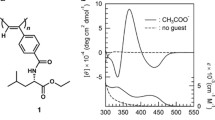Abstract
This chapter is intended to provide an insight into the construction and operation of anion sensing devices, rather than the chemistry of anion sensing per se, and therefore will concentrate more on the practical aspects of anion sensing rather than on the design of molecules or receptors that are used to specifically detect the presence of anions. Two main types of anion sensing, namely electrical and optical, will be discussed. We firstly discuss ion-selective electrodes, their construction and use, and progress through to more complex devices such as ISFETs and CHEMFETs.
This review will then consider optical sensors, together with details of their basic principles, construction and operation. Relative advantages and disadvantages compared to electronic sensors will also be discussed. Current applications of anion sensors within the field will be described together with a forward view towards some possible future technologies and applications.

Preview
Unable to display preview. Download preview PDF.
Similar content being viewed by others
Author information
Authors and Affiliations
Corresponding author
Editor information
Rights and permissions
About this chapter
Cite this chapter
Davis, F., Collyer, S.D., Higson, S.P.J. The Construction and Operation of Anion Sensors: Current Status and Future Perspectives. In: Stibor, I. (eds) Anion Sensing. Topics in Current Chemistry, vol 255. Springer, Berlin, Heidelberg. https://doi.org/10.1007/b101164
Download citation
DOI: https://doi.org/10.1007/b101164
Published:
Publisher Name: Springer, Berlin, Heidelberg
Print ISBN: 978-3-540-23247-6
Online ISBN: 978-3-540-31461-5
eBook Packages: Chemistry and Materials ScienceChemistry and Material Science (R0)




